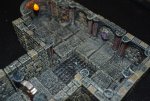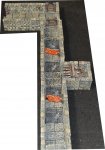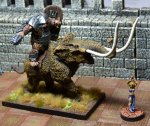The thing about D&D, at least since 3E, is that grid play isn't really any more precise than TotM. As far as the rules are concerned, the only thing that a grid does is narrow your position down to a 25 square foot area. You probably used greater precision than that to describe their positions when the players first walked into the room.
I guess that explains your perspective, but it does mean you have essentially two different games that you're playing. One in-game reality could resolve in two different directions, based solely on your out-of-game decision about whether to bother with miniatures for this fight.
Re the first graph... I honestly cannot make sense of it....
When we play on a grid, movements are precise - specific route to specific points around specifically placed objects. The **same kinda of choices are made** but they are made by specific patterns on the grid. AoEs are placed with precision. Lines of fire may intersect for cover **leading to decisions being made" that create or escape such conditions.
So, not really seeing the whole "not any more precise" than TotM or down to 25' square thing.
As for the second graph, yes and sort of.
Its certain that the in-game sequence of events may play likely will play differently based on which "game system" we use to resolve the combat. We expect that. Just like it might play out differently for many other factors.
But the key is the kinds of decisions are much the same between the two so the same kinds of choices matter - the difference being are the "triggers" derived from the positions on the grid and shown on the grid or are they derived from the choices expressed.
On a grid I may shift 5' in melee to give the archer on the ledge a tougher shot due to cover from the guy I fight. On the grid, my enemy may on his turn shift to open that line up. These can be done movement, no statement of intent.
In TotM each can state that intent state that goal and get a sure, no or a yes but choice (if we are focused on a more grid-like result) or it can be handled as an opposed check of athletics to determine which of the melee combatants gets to decide for this exchange.




